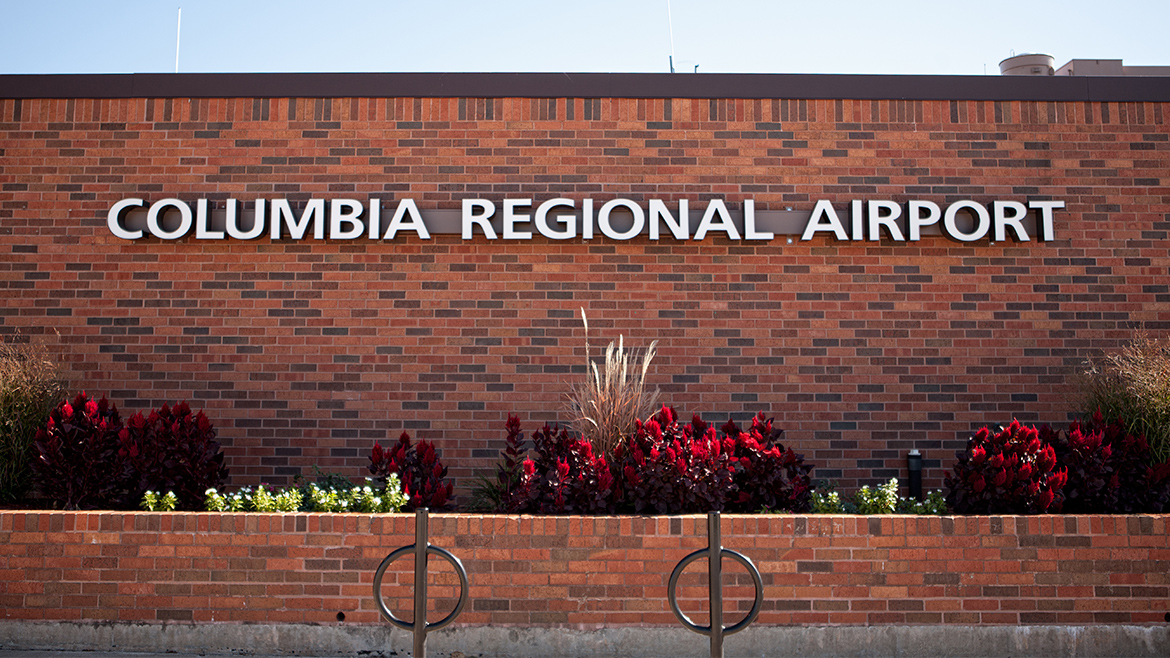Airport Terminal Improvements Needed

“Something has to be done. There’s something not quite right with having passengers waiting out in the snow.” – Ray Beck, former city manager, commenting in 1977 on airport terminal issues.
And yet, as Columbia Regional Airport is on the cusp of celebrating its 50th anniversary, passengers are still walking out of a “temporary” 38-year-old double-wide trailer and across the ramp through the rain and snow. Last month, we visited about the beginnings of aviation in Columbia and how forward-thinking leaders took bold action to create Columbia Municipal Airport in 1929, and later Columbia Regional Airport in the mid-1960s.
I am excited to look forward to the next 50 years and how we can reshape COU into a modern facility, continuing its mission to positively impact the economic future of Columbia and mid-Missouri. We cannot be complacent as the airline industry and the air travel needs of business and leisure change. We must plan based on passenger expectations, community needs, and federal requirements.
The good news is that we have bold plans in place to address most of the issues we face at COU. And we’re making tremendous progress meeting our milestones outlined in these plans.
The 2009 Airport Master Plan has provided us with a roadmap to address the much needed airfield improvements to our aging runways, taxiways, and ramp areas. The Federal Aviation Administration has, in writing, committed to more than $20 million in airfield improvements, including new airport security; the rebuilding of Taxiway A; and lengthening the crosswind runway, taxiways, main runway, and more. Most of these projects are currently scheduled to be completed by 2020. These projects will bring COU up to current FAA standards for safety and security compliance on the airfield side.
That brings us back to our aging terminal. When first opened, the terminal was as functional as it was striking, with its high lobby ceiling, tall glass for natural light, and open space for air travelers awaiting departure.
In the mid-’70s, the FAA began to require passengers to be screened, in order to prevent weapons from coming aboard. So much of the open space in the terminal lobby at COU was consumed by screening equipment. And of course, in 2001, even tighter security and additional screening measures would intrude on more terminal space.
In the past two years, we’ve seen a 38 percent increase in traffic, and the forecast is for traffic to continue growing. The consultant’s enplanement forecast shows traffic will rise to almost 120,000 enplanements by 2035.
Our airport terminal is tired. It’s too small — half the size it should be for security operations and the number of passengers currently served. It’s outdated — we face ADA compliance issues, no restaurant in the passenger waiting area, and passengers forced to walk outside across the ramp in all weather conditions. Additionally, it’s not energy efficient.
We’ve squeezed every dollar out of the current terminal building. Our only expansions have been the addition of three used double-wide trailers we purchased from Columbia Public Schools, after they had also squeezed every dollar out of them.
It’s time to do something. I am very excited about the Terminal Area Master Plan, which is currently being developed by our partners at Parsons Brinckerhoff. Recently, the consultant showed the community their preliminary findings and their recommended alternative to terminal needs at COU. The recommendation is to construct a new terminal on the north side of the current airfield.
Known as Alternative 2, it shows these advantages to constructing a new terminal:
- Maximum opportunity and flexibility to meet future demand
- Flexibility to accommodate unanticipated changes in airport activity and the airline industry
- Permanent separation of general aviation and commercial aviation operations
- No disruption to operations while construction takes place
- Provides the greatest opportunity for sustainable infrastructure and features
This recommendation addresses all of the needs currently facing COU and plans for the next 30 years.
It’s estimated that the new terminal cost could be around $38 million, although the consultant feels that, as they complete their study, the cost will be lower. Council has directed the consultant and staff to reduce costs while ensuring the terminal design meets current and future needs.
That begs the question: how do we pay for the project? We have a plan for that too.
On May 16, council voted unanimously to ask voters to consider a temporary increase in our lodging tax from 4 percent to 5 percent. This increase is forecasted to generate about $10 million over 23 years, after which the tax would sunset.
Other funding sources potentially include a matching grant from the FAA, parking revenues, additional state funding, and transportation sales tax funding.
Our airport is an important economic engine for Columbia and mid-Missouri, providing more than $87 million in total economic output annually, with 745 jobs and $26 million in payroll directly attributed to airport activities, according the most recent MoDOT report.
It’s been nearly 40 years since Ray Beck said, “Something has to be done.” I couldn’t agree more.


